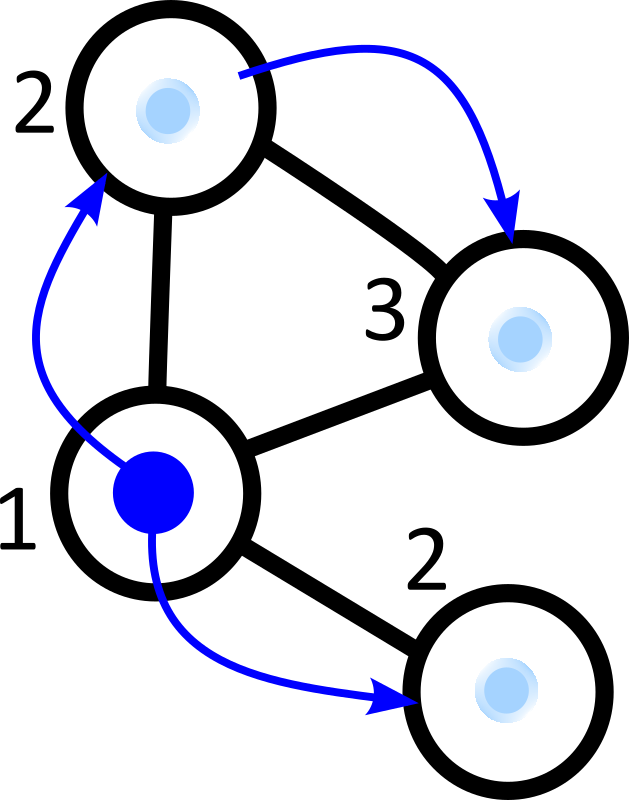Simulation model
For the modeling of all matter and its dynamics, alien combines two different concepts that can be separated as distinct layers:
- On the one hand, a purely physical model which is based on rigid-body dynamics is utilized. In this model, the cells are particles that can establish connections with each other and thus form a rigid body. The resulting structures (cell clusters) then constitute the entire matter. Each cell possesses an internal energy and emits on this basis energy particles from time to time (a kind of heat radiation). These energy particles, in turn, can be absorbed by other cells. If the energy value of a cell falls below a critical value, the cell itself decays to an energy particle.
- In addition to the purely physical model, there is also an information processing and action layer, in which the cells can be enriched with additional functionalities. The functions allow artificial or intelligent behavior patterns to be implemented in the cell structures. For this purpose, there is a whole range of possibilities in the toolbox. These are explained in more detail in the subsection Cell functions. To enable the cells to exchange information with each other and to synchronize the execution of the cell functions, a token model from graph theory is used. Roughly speaking a token jumps from cell to cell and performs the function there. To be able to pass on information, a token also has a memory. Some memory bytes have particular meanings because they encode control commands for certain cell functions. In order that a token knows to which cell it should jump next, special numbers are used, which are assigned to the cells (token branch number). For instance, a token, which is on a cell with number 1, jumps next to all connected cells, which have the number 2. On the one hand, it is possible to have several tokens on one cell at the same time and, on the other hand, a token can jump to multiple cells and will be forked.

An overview of all adjustable parameters for the physical model and the cell functions can be found in the Simulation parameters subsection.
Created with the Personal Edition of HelpNDoc: Easily create HTML Help documents